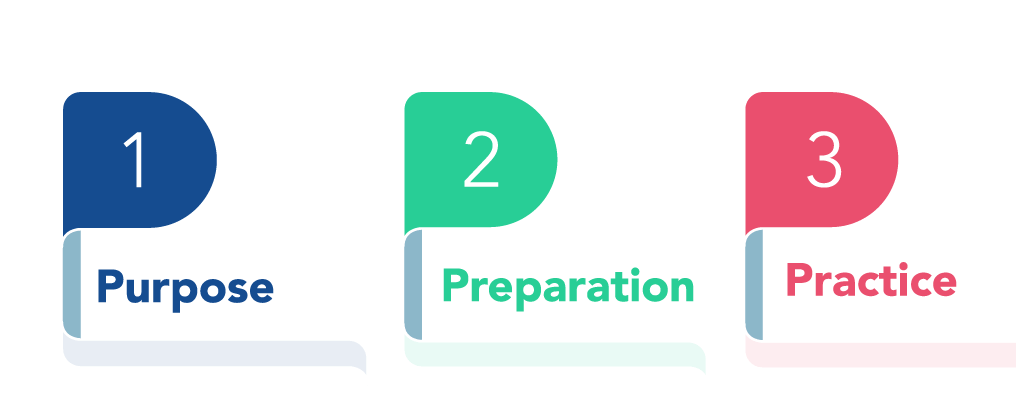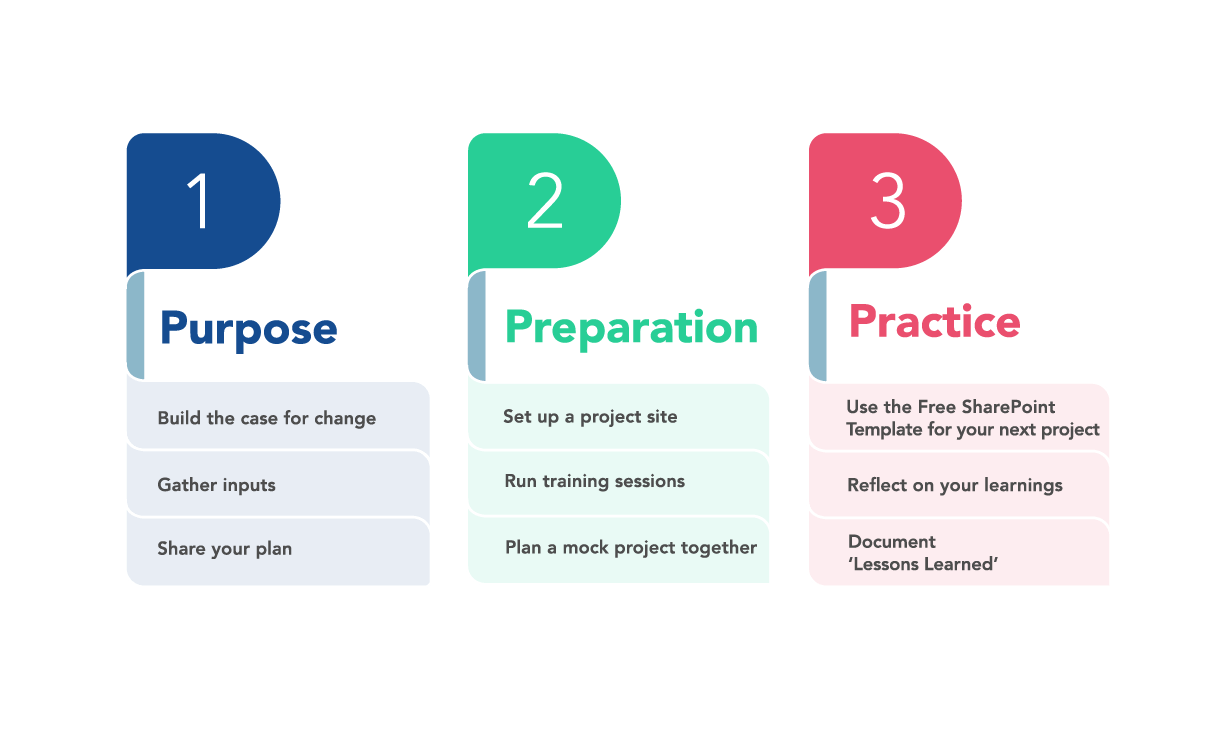The Project Management Institute estimates that the project management profession will grow by USD $6.61 trillion between 2010 and 2020, adding 87.7 million jobs to the global economy.
Develop your leadership skills with our free project handbook!
Constant change is the new norm; project management brings order to chaos. Effective project management helps improve organizational performance across key areas such as risk management, planning, strategic alignment, and teamwork.
Unfortunately, many organizations fail to realize these benefits as they do not think of project management as a valuable discipline. In many cases, project management is viewed as an unnecessary evil, an extra layer of bureaucracy that gets in the way of doing ‘stuff’.
If you are trying to introduce a standardized approach to project management, you will likely hear these challenges at every level in the organization. You need a change management plan to successfully implement project management.
In this article, I’m going to explain a framework – the 3Ps – to help you manage this change and drive user adoption for project management.
Common Obstacles to Change
Researchers who conducted a four-year study of the implementation of project management in an organization heard common complaints and concerns such as:
- Fear of additional responsibilities
- Sacrificing creativity for process
- Top-down enforcement of a new ‘fad of the month’
- Lack of capacity for new processes
- No clear reason for the change
- Additional overheads.
Employees resist change for many reasons.
Without clear guidelines or tools, people invent their own ways of working, which become familiar. A major change is viewed as a risk, a potential disruption to performance and productivity.
People oppose change if they feel it is forced upon them without consideration as to how the new approach will affect their day-to-day activities.
In times of change, people look for role models and influencers who are leading the way. If senior management or other key individuals do not embrace the change, it’s unlikely to take root throughout the organization.
Successful change management involves numerous elements such as:
- Making a clear case for the change
- Stakeholder analysis and engagement
- Addressing existing values, beliefs, and perceptions
- Strong leadership, starting at the top
- Effective communication about the change
- Training and upskilling
- Celebrating success
- Working with ‘role models’ to help win more support.
Below is a framework – the 3 Ps – to help you increase user adoption of project management using these best practices.

A Three-Step Framework to Increase Project Management Adoption
1. Purpose
A. Build the Case for Change
Connecting individuals to the ‘why’ behind a change helps inspire people to change their behavior.
McKinsey have identified two biases to look out for when leading change:
- The ‘false-consensus effect’, a belief everyone will share your attitudes and opinions.
- The ‘curse of false knowledge’, an assumption people know what you know.
It’s not enough to know the benefits of project management and believe this is the right direction for the team. You must communicate this vision clearly and listen to feedback.
Start by preparing answers to some common questions about project management:
- What is project management and why do we need it?
- What are the benefits of project management for individuals, teams, and our organization?
- Does project management add real business value?
- How long will it take to introduce project management?
- When will we see the results?
- Who should be trained as a project manager?
- What is the cost of this new approach?
Use external sources, including industry whitepapers and case studies, and internal data, such as examples of failed projects to build your case.
Next, plan project management training sessions for relevant individuals. One of the key reasons people fail to change is the belief that they can’t learn something new. Training and upskilling helps people to feel competent and thus more confident with a new process.
B. Gather Inputs from Your Team
Stakeholder engagement is core to effective change management. You will need to work with your team and senior management from the outset.
Team
Your team should feel the switch to project management will make a positive impact on their work; that they have a say in the change, and that they can play a key role in the success of future projects.
Using interviews, surveys, focus groups, and brainstorm sessions, ask your team to share their feedback and inputs.
- How do they manage day-to-day work and project tasks now?
- What challenges do they commonly encounter when working on a project?
- What is their perception of project management?
The feedback will help you to identify obstacles to change, such as concerns about personal performance or upskilling, to address later on.
In these sessions, try to identify individuals who are committed to adopting project management and can act as an ‘influencer’ or role model for the rest of the team.
Stakeholder
When rolling out wide-scale, significant changes, organizations such as Shell, Santander, and Direct Line relied upon effective, unified leadership to drive user adoption and alignment.
Ask a member of the senior management or executive team to sponsor your efforts and get their feedback about project management. In addition to removing roadblocks at a senior level, a prominent role model will encourage others to try the new approach.
Combining your vision with support from senior management and influencers within the team will create a compelling yet relatable story for project management.
C. Tell the Story of Where You Want To Go
Use a project kick-off meeting to share this story and plan with the team.
Below are some suggested items to cover. Feel free to modify to suit your team as needed.
- Explain the benefits of project management for the organization.
- Using the feedback gathered above, outline the specific advantages of project management for your team.
- Share your plan for introducing a project management process, including training workshops.
- Get feedback and update your plan as needed.
2. Preparation
A. Pick Your Project Management Approach
From Waterfall to Scrum, Prince2, and Agile, there are numerous ways to manage your project.
There is no ‘one-size-fits-all’ project methodology suitable for every project and organization. You will need to select a method suitable for the skillset of the team and your industry.
Start with a simple approach that is easy to learn so your team can experience success quickly. In time, add more complexity.
At BrightWork, we have developed a flexible, five-step approach to collaborative project management. The five steps are:
- Initiate the Project
- Plan and Setup the Project
- Work the Project
- Track and Re- Plan the Project
- Close the Project.
The five stages of collaborative project management are explained in more detail in Chapter One of our online guide, How to Use SharePoint for Project Management.
B. Run Training Sessions with The Team
Now it’s time to run a series of project management workshops with the team.
The timeframe of the workshops really depends on the skills of your team and their willingness to embrace project management.
Using collaborative project management as an example, below is a sample set of training workshops:
- Workshop 1:
- Introduction to project management – what and why?
- Introduction to collaborative project management – what, why, and how?
- Workshop 2:
- Initiate the Project
- Workshop 3:
- Plan the Project
- Workshop 4:
- Work the Project, including task and issue management
- Workshop 5:
- Track and re-plan the Project
- Workshop 6:
- Close the Project
- Workshop 7:
- Team Dynamics and ways of working
- Recap of Sessions 1-6.
Try to keep each session to 60 minutes in length and share notes in advance to help everyone prepare. If possible, record the sessions so people can re-watch in their own time. This will also help anyone who misses a session to catch up quickly.
C. Collaboratively Plan a Project Together
Once the training sessions are complete, bring the team together for another workshop – this time, planning a mock project together. Work through each phase together to generate a collaborative plan.
3. Practice
A. Use the Process for Your Next Project
Information has a very short half-life. It’s vital your team apply their new project management skills to a project as soon as they are ready.
Make sure you schedule some time to get feedback from the team about using the process, for example, add a slot to a weekly team meeting to discuss their experiences of project management.
B. Carry out a Post-Mortem to Reflect Your Learnings
Once the project is complete, carry out a project post-mortem to reflect on your learnings. Three simple questions to ask are:
- What went well?
- What didn’t go so well?
- What should we do to improve our next project?
C. Update Your Approach Using ‘Lessons Learned’
Based on the learnings from the post-mortem, document the ‘Lessons Learned’ and revise your approach for the next project.
Below is a recap of the 3Ps and the sub-steps of each phase.


